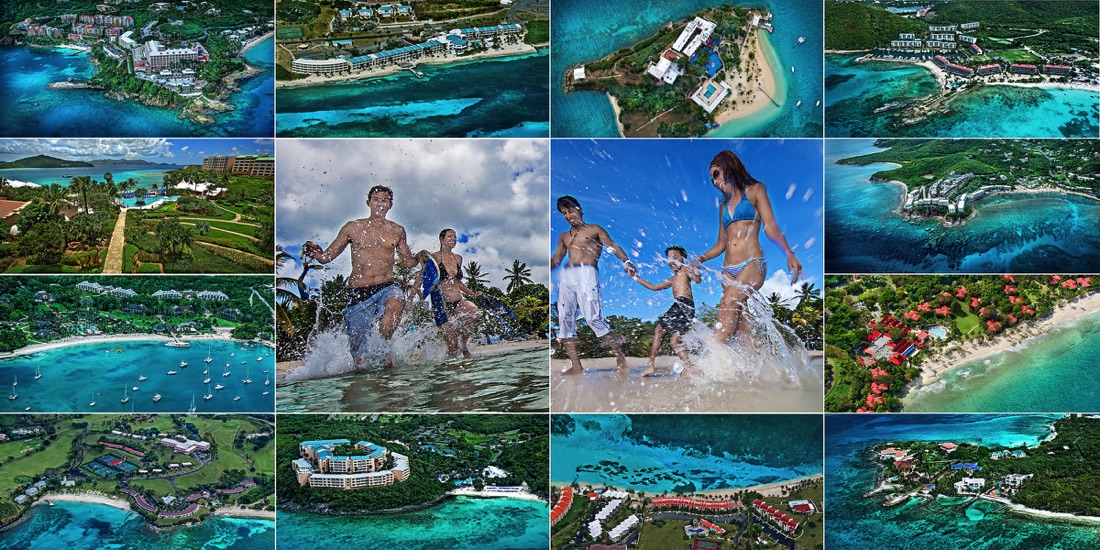The Virgin Islands of the United States (commonly called the United States Virgin Islands, U.S. Virgin Islands, American Virgin Islands or USVI) are a group of islands in the Caribbean that are an insular area of the United States. The islands are geographically part of the Virgin Islands archipelago and are located in the Leeward Islands of the Lesser Antilles.
The U.S. Virgin Islands consist of the main islands of Saint Croix, Saint John, and Saint Thomas, along with the much smaller but historically distinct Water Island, and many other surrounding minor islands. The total land area of the territory is 133.73 square miles. The territory's capital is Charlotte Amalie on the island of Saint Thomas.
The Virgin Islands were originally inhabited by the Ciboney, Carib, and Arawaks. The islands were named by Christopher Columbus on his second voyage in 1493 for Saint Ursula and her virgin followers. Over the next two hundred years, the islands were held by many European powers, including Spain, Great Britain, the Netherlands, France, and Denmark-Norway.
The Danish West India Company settled on Saint Thomas in 1672, on Saint John in 1694, and purchased Saint Croix from France in 1733.[citation needed] The islands became royal Danish colonies in 1754, named the Danish-Westindian islands (Danish: De dansk-vestindiske øer). Sugarcane, produced by slave labor, drove the islands' economy during the 18th and early 19th centuries, until the abolition of slavery by Governor Peter von Scholten on July 3, 1848.
For the remainder of the period of Danish rule, the islands were not economically viable and significant transfers were made from the Danish state budgets to the authorities in the islands. In 1867 a treaty to sell Saint Thomas and Saint John to the United States was agreed, but the sale was never effected. A number of reforms aimed at reviving the islands' economy were attempted, but none had great success. A second draft treaty to sell the islands to the United States was negotiated in 1902 but was narrowly defeated in the Danish parliament.
The onset of World War I brought the reforms to a close and again left the islands isolated and exposed. During the submarine warfare phases of the First World War, the United States, fearing that the islands might be seized by Germany as a submarine base, again approached Denmark with a view to buying them. After a few months of negotiations, a selling price of $25 million in United States gold coin was agreed (this is equivalent to $580 million in 2013 dollars). At the same time the economics of continued possession weighed heavily on the minds of Danish decision makers, and a consensus in favor of selling emerged in the Danish parliament.
The Treaty of the Danish West Indies was signed in August 1916, with a Danish referendum held in December 1916 to confirm the decision. The deal was finalized on January 17, 1917, when the United States and Denmark exchanged their respective treaty ratifications. The United States took possession of the islands on March 31, 1917 and the territory was renamed the Virgin Islands of the United States. Every year Transfer Day is recognized as a holiday, to celebrate the acquisition of the islands by the United States.[citation needed] U.S. citizenship was granted to the inhabitants of the islands in 1927.
Water Island, a small island to the south of Saint Thomas, was initially administered by the U.S. federal government and did not become a part of the U.S. Virgin Islands territory until 1996, when 50 acres of land was transferred to the territorial government. The remaining 200 acres of the island were purchased from the U.S. Department of the Interior in May 2005 for $10, a transaction which marked the official change in jurisdiction.
The U.S. Virgin Islands are in the Atlantic Ocean, about 40 miles east of Puerto Rico and immediately west of the British Virgin Islands. They share the Virgin Islands Archipelago with the Spanish Virgin Islands (administered by Puerto Rico) and the British Virgin Islands. The territory consists of four main islands: Saint Thomas, Saint John, Saint Croix, and Water Island, as well as several dozen smaller islands. The main islands have nicknames often used by locals: "Twin City" (St. Croix), "Rock City" (St. Thomas) and "Love City" (St. John). The combined land area of the islands is roughly twice the size of Washington, D.C
The U.S. Virgin Islands are known for their white sand beaches, including Magens Bay and Trunk Bay, and strategic harbors, including Charlotte Amalie and Christiansted. Most of the islands, including Saint Thomas, are volcanic in origin and hilly. The highest point is Crown Mountain, Saint Thomas (1,555 ft or 474 m).
Saint Croix, the largest of the U.S. Virgin Islands, lies to the south and has a flatter terrain. The National Park Service owns more than half of Saint John, nearly all of Hassel Island, and many acres of coral reef.
Virgin Islands of the United States

St Croix - St Thomas - St John - Caribbean Islands